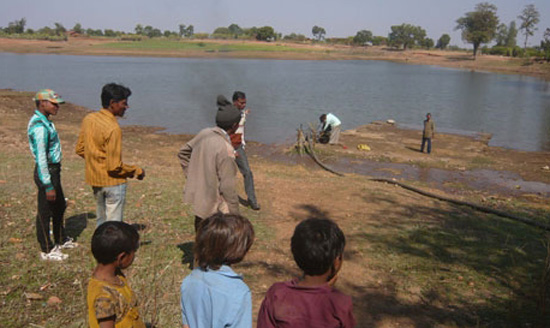Bangalore: Water crisis in the State may get worse as the monsoon is likely to be delayed. With the onset of monsoon in Kerala, it was anticipated that the rains will hit Karnataka by June 4 or 5 as it had happened last year.
However, sources in the government suggest that the monsoon may be delayed till mid-June due to the slow movement of the southwest winds, leaving the State in a huge conundrum over the water capacity required to keep the agriculture season and the power situation afloat.
Lowest levels
Present water levels in reservoirs are at the lowest in the past five years and have dipped below what was available during the two back-to-back drought years. According to figures provided by the Water Resources Department, the current water levels in reservoirs are not more than 50 per cent of the capacity compared to what was available in May 2012. As a result, speculations are rife that the low water levels may hit agriculture production and power generation in the state, with an increase in the usage of water for drinking and industrial use. Weather bureau officials stated that the western winds are still forming, away from the coastal lines, and may take time to join the southern winds. It is too early to predict whether the southwestern monsoon winds are ready to blow. With Kerala likely to receive the showers by June 3, we can hope to receive the same after a week or 10 days, said the weatherman.
Already facing a shortage of 15 per cent in terms of power generation, the depleting water levels in the reservoirs has worried the State. The state-run power generation and distribution agencies are heavily banking on the monsoon season to ease the situation.
‘Safe for now’
“We are currently safe till June first week with the existing water in our catchments. With the onset of monsoon in Kerala, we can expect rains by June first week,” said a hopeful M R Kamble, managing director, Karnataka Power Corporation Limited (KPCL).
S K Pattanayak, principal secretary, Energy department, said the power situation would be stable for the next month with an increase in the thermal power generation. He said the department has already implemented the plan to ensure power availability till June 15. “We are even going ahead with provisions to increase our durability to 55 days with the existing resources,” he said.
Pattanayak said the hydel power plants were the back-up to the their thermal power capacity to ensure that there is sufficient power for the state. “The power generation from hydel plants were always the last resort. We are controlling the flow of water and using it judiciously to generate power,” said Pattanayak.
Maintaining balance
The Energy department is also hopeful that the power requirements for IP sets, currently almost at a standstill on account of poor rains, will help them maintain a balance in the supply and demand of energy till the onset of the monsoon season.
At the other end, the massive fall in water levels across reservoirs has hit the drinking water and agriculture needs. Of the 10 reservoirs in the State, only the Almatti, the Narayanapura and the Bhadra have more than five tmc of water in live storage.
Five other reservoirs have live storage capacity above 1.5 tmc. However, the primary water resource reservoirs including the KRS, the Kabini and the Harangi have almost gone dry, affecting water needs of Bangalore and farmers in the Cauvery basin. In the Kabini, the live storage is nil as compared to the previous year’s 3.5 tmc.
Officials in the Water Resources department said the drawing of water from the Hemavathi river may continue, if the rains do not arrive on time. The department will be ready with contingency plans to supply water to the Cauvery basin areas. As of now, the water drawn from the Hemavathi has provided some relief.
The water crisis in the Cauvery basin worsened once the State began releasing water to Tamil Nadu as per the Cauvery River Water Tribunal order. Since june 15, the State has released 203.96 tmc ft of water to Tamil Nadu.
Reservoir Full reservoir Gross storage Live storage Outflow level (in feet) (in tmc) (in tmc) (in cusecs)
* Krishnarajasagara 124.80 49.452 1.04 680
* Kabini 2,284 19.516 0.00 100
* Harangi 2,859 8.500 0.77 0
* Hemavathi 2,922 37.103 2.71 100
* Bhadra 2,158 71.535 6.28 3,107
* Tungabhadra 1,633 100.85 1.88 920
* Ghataprabha 2,175 51.170 3.76 4,922
* Malaprabha 2079.50 37.731 1.28 124
* Alamatti 1704.81 123.081 13.88 250
*Narayanapura 1615.07 33.310 7.46 250

